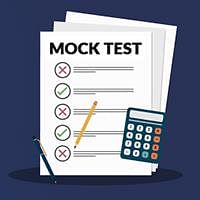CLAT Exam > CLAT Questions > Which gas is used to manufacture vanaspati fr...
Start Learning for Free
Which gas is used to manufacture vanaspati from vegetable oil is -
- a)carbon dioxide
- b)nitrogen
- c)oxygen
- d)hydrogen
Correct answer is option 'D'. Can you explain this answer?
| FREE This question is part of | Download PDF Attempt this Test |
Verified Answer
Which gas is used to manufacture vanaspati from vegetable oil is -a)ca...
Hydrogen is used to manufacture vanaspati from vegetable oil.
Most Upvoted Answer
Which gas is used to manufacture vanaspati from vegetable oil is -a)ca...
Gas used to manufacture vanaspati from vegetable oil: Hydrogen
Explanation:
Vanaspati is a form of hydrogenated vegetable oil that is solid at room temperature. It is commonly used as a substitute for ghee (clarified butter) in cooking. The process of manufacturing vanaspati involves the use of hydrogen gas.
Process of manufacturing vanaspati:
1. Hydrogenation: The first step in manufacturing vanaspati is the hydrogenation of vegetable oil. This process involves the addition of hydrogen gas to vegetable oil under specific conditions of temperature and pressure.
2. Catalyst: The hydrogenation process is catalyzed by the presence of a catalyst, such as nickel or palladium. The catalyst helps in the breaking of double bonds present in the unsaturated fatty acids of vegetable oil and facilitates the addition of hydrogen atoms.
3. Saturation of fatty acids: During hydrogenation, the unsaturated fatty acids present in vegetable oil are saturated with hydrogen atoms. This process converts liquid vegetable oil into a solid form, which is characteristic of vanaspati.
4. Trans fatty acids: In the process of hydrogenation, some of the unsaturated fatty acids undergo a partial rearrangement, resulting in the formation of trans fatty acids. Trans fatty acids are known to have adverse health effects and are considered unhealthy when consumed in excessive amounts.
5. Deodorization and refining: After the hydrogenation process, the vanaspati undergoes further refining steps, including deodorization to remove any undesirable odors and impurities. This refining process helps in enhancing the quality and shelf life of vanaspati.
6. Addition of flavor and color: Finally, flavoring agents and food-grade colors may be added to the refined vanaspati to enhance its taste and appearance.
Conclusion:
Hydrogen gas is used in the manufacturing process of vanaspati from vegetable oil. The hydrogenation process involves saturating the unsaturated fatty acids in vegetable oil with hydrogen atoms, resulting in the solid form of vanaspati.
Explanation:
Vanaspati is a form of hydrogenated vegetable oil that is solid at room temperature. It is commonly used as a substitute for ghee (clarified butter) in cooking. The process of manufacturing vanaspati involves the use of hydrogen gas.
Process of manufacturing vanaspati:
1. Hydrogenation: The first step in manufacturing vanaspati is the hydrogenation of vegetable oil. This process involves the addition of hydrogen gas to vegetable oil under specific conditions of temperature and pressure.
2. Catalyst: The hydrogenation process is catalyzed by the presence of a catalyst, such as nickel or palladium. The catalyst helps in the breaking of double bonds present in the unsaturated fatty acids of vegetable oil and facilitates the addition of hydrogen atoms.
3. Saturation of fatty acids: During hydrogenation, the unsaturated fatty acids present in vegetable oil are saturated with hydrogen atoms. This process converts liquid vegetable oil into a solid form, which is characteristic of vanaspati.
4. Trans fatty acids: In the process of hydrogenation, some of the unsaturated fatty acids undergo a partial rearrangement, resulting in the formation of trans fatty acids. Trans fatty acids are known to have adverse health effects and are considered unhealthy when consumed in excessive amounts.
5. Deodorization and refining: After the hydrogenation process, the vanaspati undergoes further refining steps, including deodorization to remove any undesirable odors and impurities. This refining process helps in enhancing the quality and shelf life of vanaspati.
6. Addition of flavor and color: Finally, flavoring agents and food-grade colors may be added to the refined vanaspati to enhance its taste and appearance.
Conclusion:
Hydrogen gas is used in the manufacturing process of vanaspati from vegetable oil. The hydrogenation process involves saturating the unsaturated fatty acids in vegetable oil with hydrogen atoms, resulting in the solid form of vanaspati.
Attention CLAT Students!
To make sure you are not studying endlessly, EduRev has designed CLAT study material, with Structured Courses, Videos, & Test Series. Plus get personalized analysis, doubt solving and improvement plans to achieve a great score in CLAT.

|
Explore Courses for CLAT exam
|

|
Similar CLAT Doubts
Which gas is used to manufacture vanaspati from vegetable oil is -a)carbon dioxideb)nitrogenc)oxygend)hydrogenCorrect answer is option 'D'. Can you explain this answer?
Question Description
Which gas is used to manufacture vanaspati from vegetable oil is -a)carbon dioxideb)nitrogenc)oxygend)hydrogenCorrect answer is option 'D'. Can you explain this answer? for CLAT 2024 is part of CLAT preparation. The Question and answers have been prepared according to the CLAT exam syllabus. Information about Which gas is used to manufacture vanaspati from vegetable oil is -a)carbon dioxideb)nitrogenc)oxygend)hydrogenCorrect answer is option 'D'. Can you explain this answer? covers all topics & solutions for CLAT 2024 Exam. Find important definitions, questions, meanings, examples, exercises and tests below for Which gas is used to manufacture vanaspati from vegetable oil is -a)carbon dioxideb)nitrogenc)oxygend)hydrogenCorrect answer is option 'D'. Can you explain this answer?.
Which gas is used to manufacture vanaspati from vegetable oil is -a)carbon dioxideb)nitrogenc)oxygend)hydrogenCorrect answer is option 'D'. Can you explain this answer? for CLAT 2024 is part of CLAT preparation. The Question and answers have been prepared according to the CLAT exam syllabus. Information about Which gas is used to manufacture vanaspati from vegetable oil is -a)carbon dioxideb)nitrogenc)oxygend)hydrogenCorrect answer is option 'D'. Can you explain this answer? covers all topics & solutions for CLAT 2024 Exam. Find important definitions, questions, meanings, examples, exercises and tests below for Which gas is used to manufacture vanaspati from vegetable oil is -a)carbon dioxideb)nitrogenc)oxygend)hydrogenCorrect answer is option 'D'. Can you explain this answer?.
Solutions for Which gas is used to manufacture vanaspati from vegetable oil is -a)carbon dioxideb)nitrogenc)oxygend)hydrogenCorrect answer is option 'D'. Can you explain this answer? in English & in Hindi are available as part of our courses for CLAT.
Download more important topics, notes, lectures and mock test series for CLAT Exam by signing up for free.
Here you can find the meaning of Which gas is used to manufacture vanaspati from vegetable oil is -a)carbon dioxideb)nitrogenc)oxygend)hydrogenCorrect answer is option 'D'. Can you explain this answer? defined & explained in the simplest way possible. Besides giving the explanation of
Which gas is used to manufacture vanaspati from vegetable oil is -a)carbon dioxideb)nitrogenc)oxygend)hydrogenCorrect answer is option 'D'. Can you explain this answer?, a detailed solution for Which gas is used to manufacture vanaspati from vegetable oil is -a)carbon dioxideb)nitrogenc)oxygend)hydrogenCorrect answer is option 'D'. Can you explain this answer? has been provided alongside types of Which gas is used to manufacture vanaspati from vegetable oil is -a)carbon dioxideb)nitrogenc)oxygend)hydrogenCorrect answer is option 'D'. Can you explain this answer? theory, EduRev gives you an
ample number of questions to practice Which gas is used to manufacture vanaspati from vegetable oil is -a)carbon dioxideb)nitrogenc)oxygend)hydrogenCorrect answer is option 'D'. Can you explain this answer? tests, examples and also practice CLAT tests.

|
Explore Courses for CLAT exam
|

|
Suggested Free Tests
Signup for Free!
Signup to see your scores go up within 7 days! Learn & Practice with 1000+ FREE Notes, Videos & Tests.
























